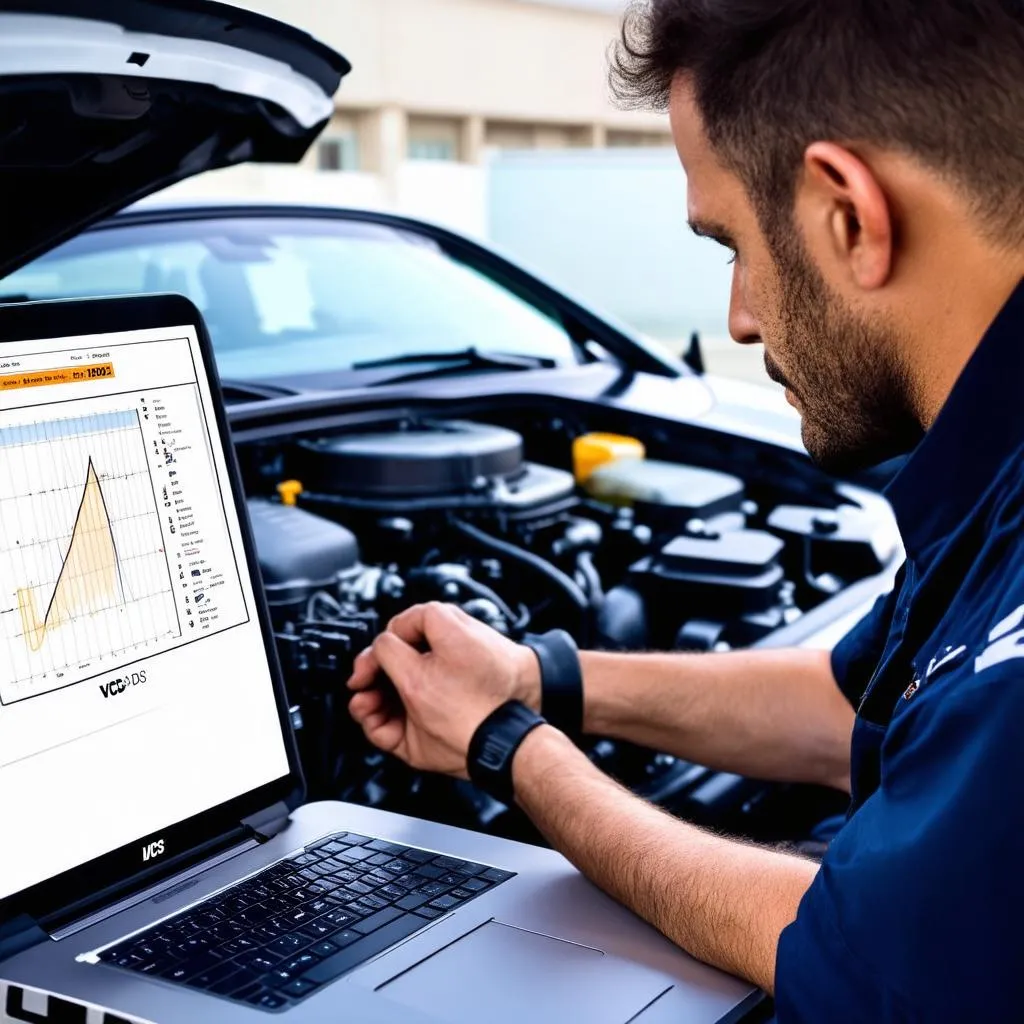VCDS, formerly known as VAG-COM, is a powerful diagnostic software designed for Volkswagen Audi Group (VAG) vehicles. Unlike generic OBD-II scanners, VCDS offers deep access to various vehicle systems, allowing for advanced diagnostics, coding, adaptations, and more.
“VCDS Procedures” refers to the step-by-step instructions for performing specific tasks using the VCDS software. These procedures can range from simple tasks like reading fault codes to more complex operations like adapting throttle bodies or coding new keys.
This comprehensive guide delves into the world of VCDS procedures, providing valuable insights for both novice and experienced users.
Understanding VCDS Procedures
VCDS procedures are essentially detailed guides that walk you through interacting with your VAG vehicle’s control modules. They provide a structured approach to:
-
Diagnose and Clear Fault Codes: Identify and interpret Diagnostic Trouble Codes (DTCs) stored in various control modules, and clear them once resolved.
-
Perform Output Tests: Activate specific components like actuators, solenoids, or relays to verify their functionality.
-
Adaptations: Adjust and fine-tune various control module settings to optimize vehicle performance or customize features.
-
Coding: Enable or disable specific features within control modules.
-
Basic Settings: Establish baseline parameters for certain components after repairs or replacements.
The Importance of Following VCDS Procedures Correctly
While VCDS empowers users with immense control over their vehicles, it’s crucial to approach procedures with caution. Incorrect modifications can lead to unexpected behavior, warning lights, or even system damage. Always double-check procedures and seek guidance from reputable sources or forums if needed.
 VCDS software interface
VCDS software interface
Common VCDS Procedures and Their Applications
Let’s explore some common VCDS procedures and their applications:
1. Throttle Body Alignment
Procedure: Involves accessing the engine control module, putting the throttle body into a learning mode, and following specific steps to calibrate its position.
Application: Necessary after cleaning or replacing the throttle body to ensure smooth engine operation and prevent issues like rough idling.
2. Diesel Particulate Filter (DPF) Regeneration
Procedure: Initiates a forced regeneration cycle of the DPF to burn off accumulated soot.
Application: Used to address DPF-related warning lights or performance issues caused by excessive soot buildup.
3. Brake Pad Service Reset
Procedure: Resets the service reminder for brake pad replacement.
Application: Performed after replacing brake pads and sensors to turn off the warning light.
4. Key Matching
Procedure: Involves accessing the immobilizer control module and programming new keys to the vehicle’s immobilizer system.
Application: Essential when adding spare keys or replacing lost keys. For more detailed information on this specific procedure, you can refer to our guide on VCDS Key Matching.
5. Long Coding Adaptations
Procedure: Modifying specific bytes within a control module’s coding string to enable or disable features.
Application: Allows for customization of various features like daytime running lights (DRLs), automatic locking, and convenience features.
 Mechanic using VCDS for diagnostics
Mechanic using VCDS for diagnostics
Tips for Using VCDS Procedures Safely and Effectively
-
Use a Reliable VCDS Cable: Ensure you have a genuine VCDS cable from a reputable source like Cardiagtech to guarantee stable communication and accurate results.
-
Back Up Your Control Module Data: Before making any modifications, always back up your control module coding and adaptation data. This ensures that you can revert to the original settings if needed.
-
Consult Reputable Sources: Refer to trusted VCDS forums, online communities, or factory repair manuals for verified procedures and seek assistance if you encounter any difficulties.
-
Start with Small Changes: When exploring coding and adaptations, it’s best to begin with minor adjustments and gradually work your way up. This allows you to monitor the effects of each change.
FAQs about VCDS Procedures
Q: Is it safe to perform VCDS procedures myself?
A: With proper research, understanding, and caution, many VCDS procedures can be performed safely by individuals. However, complex procedures or those involving safety-critical systems are best left to trained professionals.
Q: Where can I find reliable VCDS procedures?
A: Reputable online forums, VCDS communities, and factory repair manuals are excellent sources for verified procedures. Always double-check the information from multiple sources before making any modifications.
Q: I encountered a “No Response from Controller” error. What should I do?
A: This error usually indicates a communication problem between the VCDS cable and the control module. Check your connections, ensure you have the correct cable, and refer to our troubleshooting guide on fixing “No Response from Controller” errors.
Q: Can I use VCDS on other car brands?
A: VCDS is specifically designed for VAG vehicles (Volkswagen, Audi, Seat, Skoda, Bentley, Lamborghini). It will not function on other car brands.
Conclusion
VCDS procedures provide a gateway to unlock the full potential of your VAG vehicle. From essential diagnostics to advanced customizations, understanding and utilizing these procedures empower you to take control of your vehicle’s maintenance and performance. However, it’s crucial to emphasize that caution, research, and seeking expert guidance when needed are paramount to ensure safe and successful outcomes.
If you have any further questions or need expert assistance with VCDS procedures, feel free to reach out to the team at CARDIAGTECH.


